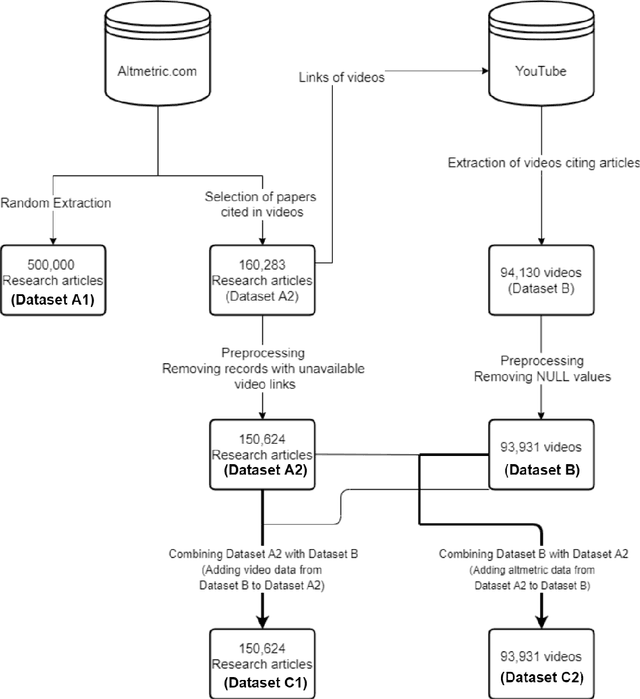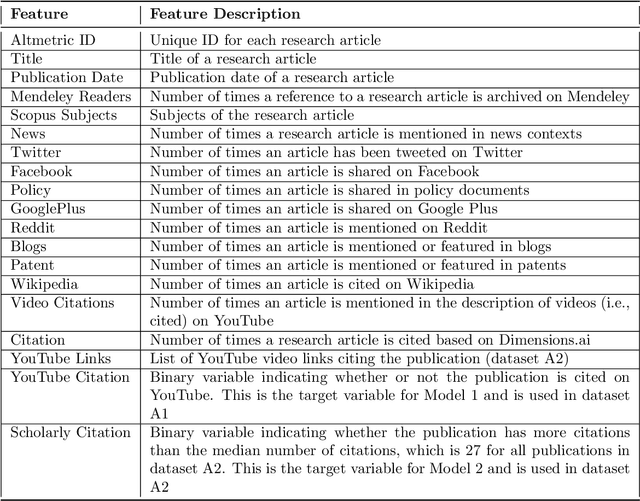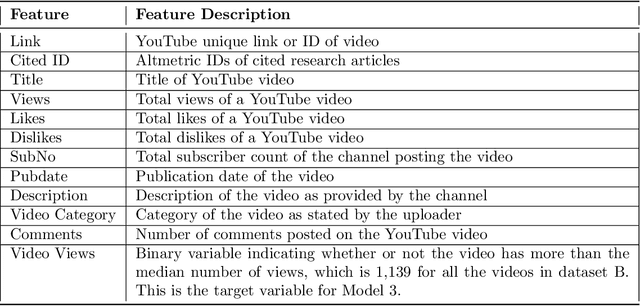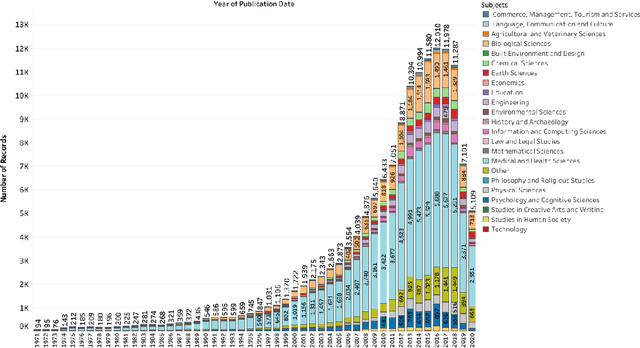Abdul Rahman Shaikh
YouTube and Science: Models for Research Impact
Sep 01, 2022



Abstract:Video communication has been rapidly increasing over the past decade, with YouTube providing a medium where users can post, discover, share, and react to videos. There has also been an increase in the number of videos citing research articles, especially since it has become relatively commonplace for academic conferences to require video submissions. However, the relationship between research articles and YouTube videos is not clear, and the purpose of the present paper is to address this issue. We created new datasets using YouTube videos and mentions of research articles on various online platforms. We found that most of the articles cited in the videos are related to medicine and biochemistry. We analyzed these datasets through statistical techniques and visualization, and built machine learning models to predict (1) whether a research article is cited in videos, (2) whether a research article cited in a video achieves a level of popularity, and (3) whether a video citing a research article becomes popular. The best models achieved F1 scores between 80% and 94%. According to our results, research articles mentioned in more tweets and news coverage have a higher chance of receiving video citations. We also found that video views are important for predicting citations and increasing research articles' popularity and public engagement with science.
Predicting Patent Citations to measure Economic Impact of Scholarly Research
Jun 07, 2019

Abstract:A crucial goal of funding research and development has always been to advance economic development. On this basis, a consider-able body of research undertaken with the purpose of determining what exactly constitutes economic impact and how to accurately measure that impact has been published. Numerous indicators have been used to measure economic impact, although no single indicator has been widely adapted. Based on patent data collected from Altmetric we predict patent citations through various social media features using several classification models. Patents citing a research paper implies the potential it has for direct application inits field. These predictions can be utilized by researchers in deter-mining the practical applications for their work when applying for patents.
 Add to Chrome
Add to Chrome Add to Firefox
Add to Firefox Add to Edge
Add to Edge